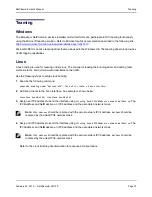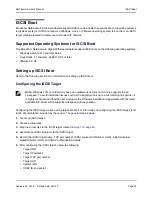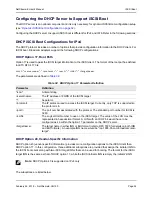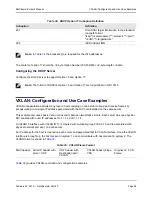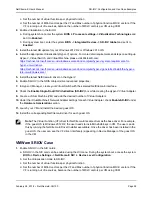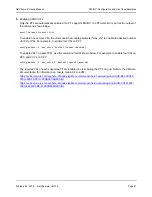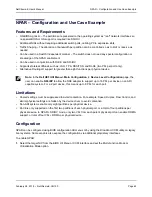
ISCSI Boot
NetXtreme-E User’s Manual
February 26, 2018 • NetXtreme-E-UG100
Page 49
ISCSI Boot
Broadcom NetXtreme-E Ethernet adapters support iSCSI boot to enable the network boot of operating systems
to diskless systems. iSCSI boot allows a Windows, Linux, or VMware operating system to boot from an iSCSI
target machine located remotely over a standard IP network.
Supported Operating Systems for iSCSI Boot
The Broadcom NetXtreme-E Gigabit Ethernet adapters support iSCSI boot on the following operating systems:
•
Windows Server 2012 and later 64-bit
•
Linux RHEL 7.1 and later, SLES11 SP4 or later
•
VMware 6.0 U2
Setting up iSCSI Boot
Refer to the following sections for information on setting up iSCSI boot.
Configuring the iSCSI Target
Configuring the iSCSI target varies per the target vendor. For information on configuring the iSCSI target, refer
to the documentation provided by the vendor. The general steps include:
1.
Create an iSCSI target.
2.
Create a virtual disk.
3.
Map the virtual disk to the iSCSI target created in
4.
Associate an iSCSI initiator with the iSCSI target.
5.
Record the iSCSI target name, TCP port number, iSCSI Logical Unit Number (LUN), initiator Internet
Qualified Name (IQN), and CHAP authentication details.
6.
After configuring the iSCSI target, obtain the following:
•
Target IQN
•
Target IP address
•
Target TCP port number
•
Target LUN
•
Initiator IQN
•
CHAP ID and secret
Note:
Windows 2016 (or older) may have an outdated inbox driver which only supports forced
Linkspeed. To avoid installation issues such as the inability to link up to a mismatching link partner, it
is highly recommended that the user customize the Windows Installation image/media with the latest
available NIC driver which supports Linkspeed Auto-negotiation.



